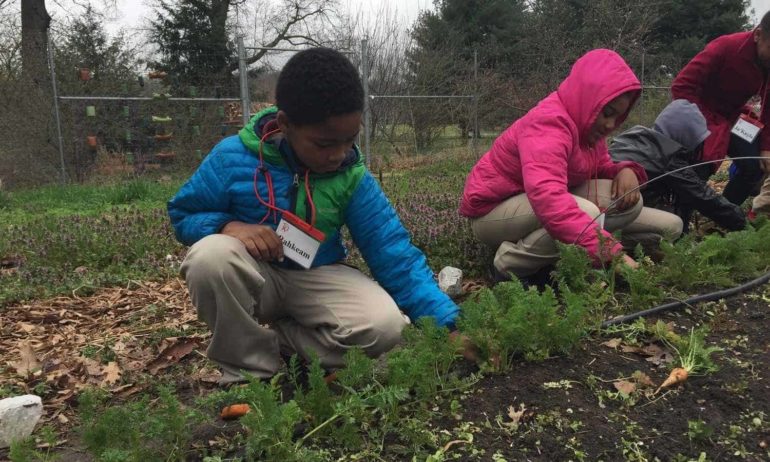The Washington Youth Garden (WYG) provides garden-based programs for students and families in Washington, D.C. Visitors to the WYG demonstration garden at the National Arboretum learn about plants, soil, environmental science and stewardship. WYG also helps under-resourced schools implement living classroom gardens, where students engage in hands-on learning and interact daily with the natural world. Food Tank spoke with WYG Program Director Ulises Zatarain.
Food Tank (FT): There are many educational gardens sprouting up in Washington, D.C. and around the country. What makes the Washington Youth Garden unique?
Ulises Zatarain (UZ): When groups come to visit our youth garden they learn about the different plants that we have in-season, the crops that are growing and the properties of those crops. In some cases, the groups pick out food items and share a meal together afterward. It is a very community-oriented experience and allows young folks and students to learn about the environment. We also stand apart because the garden is on the grounds of the National Arboretum, which is rather breathtaking.
FT: How many students do you interact with yearly?
UZ: Our Washington Youth Garden serves upwards of 5,000 students each year.
FT: What happens to the food produced in your gardens?
UZ: We donate a little over 2,500 pounds of food each year. We donate the food at the school gardens through community outreach and engagement events. The majority of the food from the demonstration garden goes to to food banks and hunger-relief organizations in the area.
FT: What do you think are the students’ most valuable takeaways from participating in your programs?
UZ: Students rediscover nature and the way that plants contribute to our environment. In our garden science program students apply that learning further and explore environmental sciences and horticulture as a potential career track. Our Green Ambassadors program gives high school students the chance to spend six weeks working in the demonstration garden and school gardens setting up raised beds and maintaining different components of the garden. The ambassadors also implement training sessions and workshops for younger students around environmental sciences and stewardship. With those particular interns, we see growth in leadership development, professional skills and job readiness skills.
FT: Describe your practice of transferring an on-site garden into the hands of a school: What does it take for one of your school gardens to become independent from WYG?
UZ: We work with schools and communities that are under-resourced and under-invested. They come to us with an interest in establishing a school garden. We help to guide the process of establishing a community garden on their school grounds. The key part is integrating that school garden into the everyday lesson planning and educational work – particularly of the sciences, environmental sciences and STEM classes – so that the garden is used not only for recreational purposes but educational purposes as well.
So far we’ve worked with five schools in the D.C. area and “graduated” two of them. The schools that we work with have created curriculum where every day and biweekly lessons involve using the garden as an educational tool. One of the schools created a garden science classroom and brought on a garden science instructor because they’ve seen the impact that the garden, curriculum, and lesson-planning has had on their students. We work with the schools for three years and on the fourth year the school begins to assume more responsibility, then total ownership, over the garden and programming.
FT: What makes your organization work? What could other aspiring non-profits learn from WYG?
UZ: I think it’s persistence and perseverance. Both the staff and leadership have always persisted and persevered to provide programming to the community at large. Also, the community members that are impacted by the WYG make it work because they’ve had a longstanding commitment to seeing the WYG remain sustainable. The WYG will be celebrating its 45th anniversary in 2016, and that’s all thanks to the continued effort of engaging community members and stakeholders.
FT: How can people that are interested become involved or support your organization?
UZ: The best way would be to visit our website and find out more about our programs. We have volunteer days every Tuesday and Saturday at the demonstration garden, or people can come out to a build day at one of the school gardens.















